As Moscow Promises Peace Documents That Never Arrive, Russian Forces Advance Across Multiple Fronts and China Cuts Drone Sales to Ukraine
Summary of the Day – May 29, 2025
The diplomatic dance between Washington, Moscow, and Kyiv took on an increasingly surreal quality as Russian officials continued to promise a peace memorandum that remained perpetually just out of reach. President Volodymyr Zelensky accused Russia of stalling the peace process by failing to deliver promised negotiation documents, warning international partners that Moscow is attempting to deceive those still relying on diplomacy over pressure. Meanwhile, the battlefield told a different story entirely: Russian forces seized multiple settlements across Ukrainian territory, from Stroivka in the northeast to advances near Pokrovsk in the east. In a development that could reshape the technological balance of the war, President Zelensky revealed that China has stopped selling drones to Ukraine and Western countries while continuing to supply them to Russia, including establishing production lines on Russian territory with Chinese representatives present.
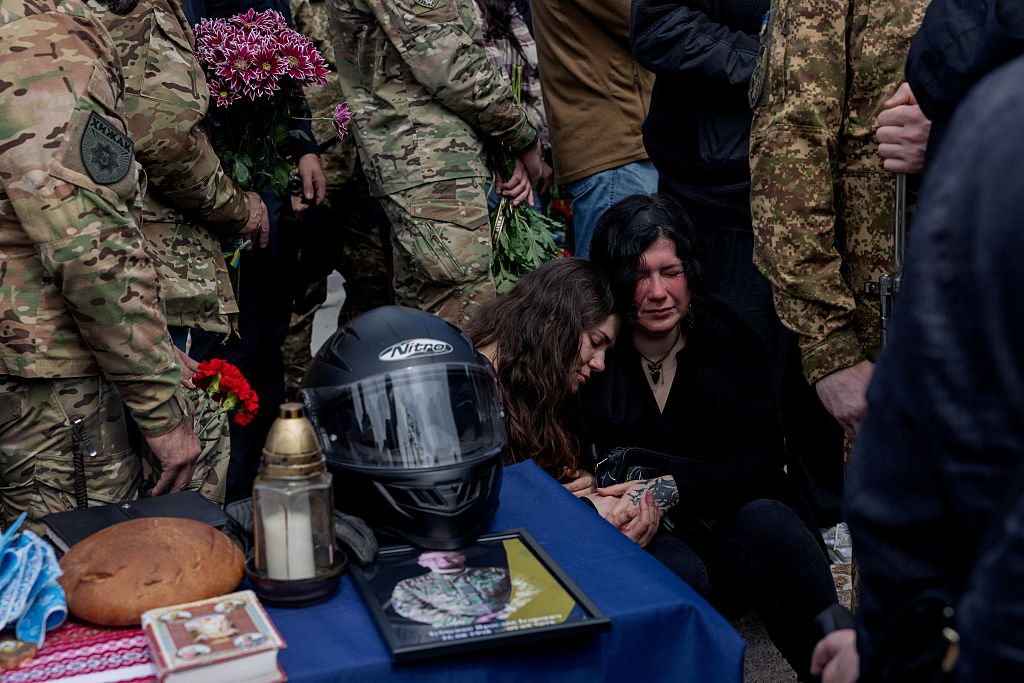
Relatives and friends mourn next to the coffin of 26-year-old Ukrainian serviceman Yaroslav Shvets, an actor and sapper, who died as a result of wounds received at the front, during the funeral ceremony in Kyiv. (Tetiana Dzhafarova / AFP via Getty Images)
The Vanishing Act: Russia’s Peace Memorandum Remains a Phantom
For more than a week, Russian officials have promised to deliver a detailed memorandum outlining their conditions for peace negotiations with Ukraine. That document, despite repeated assurances from Moscow, has yet to materialize in any tangible form.
“Even the so-called memorandum they promised and claimed to be preparing for more than a week — no one has seen it,” Zelensky stated on May 29. “Ukraine hasn’t received it. Our partners haven’t received it. Even Turkey, which hosted the first meeting, hasn’t received the updated agenda.”
Russian Foreign Minister Sergei Lavrov had claimed on May 28 that Russia was prepared to present its memorandum during the next bilateral meeting with Ukraine, suggesting that Russian and Ukrainian representatives should meet in Istanbul on June 2. Russian Presidential Aide Vladimir Medinsky, who led the last Russian delegation in Istanbul, claimed he spoke with Ukrainian Defense Minister Rustem Umerov and proposed a date for Russia and Ukraine to exchange their memoranda.
Umerov responded that Ukraine is ready for a ceasefire and further negotiations, stating that Ukraine has already presented its memorandum to Russia. However, Kremlin Spokesperson Dmitry Peskov claimed on May 29 that Russia has not received a copy of Ukraine’s memorandum and that Ukraine has not responded to Lavrov’s proposal.
Speaking after a high-level meeting with Umerov, Foreign Minister Andrii Sybiha, and presidential chief of staff Andrii Yermak, Zelensky called for renewed international pressure on Russia. “Words don’t work with Moscow. They are doing everything to make these meetings meaningless. That is why sanctions and real pressure on Russia are essential.”
Beijing’s Drone Embargo: China Cuts Ukraine While Supplying Russia
In a revelation that could significantly impact the technological balance of the war, President Zelensky accused China of stopping drone sales to Ukraine and Western countries while continuing to supply them to Russia.
“Chinese Mavic is open for Russians but is closed for Ukrainians,” Zelensky told reporters, referring to the popular quadcopter drone manufactured by China’s DJI. “There are production lines on Russian territory where there are Chinese representatives.”
The Mavic, typically a civilian drone used for aerial photography, has been adapted by both Ukrainian and Russian forces for battlefield surveillance and as a weapon platform capable of carrying explosives. Drones have played a decisive role in the war, with both sides using them for reconnaissance and precision attacks.
Zelensky’s remarks reportedly align with assessments from European officials. One official told Bloomberg that China has not only restricted drone exports to Ukraine and other Western buyers, but has also reduced shipments of drone components, including motor magnets, while ramping up deliveries to Russia.
Beijing has repeatedly denied aiding either side with military goods. On May 27, the Chinese Foreign Ministry rejected claims made by Ukrainian intelligence chief Oleh Ivashchenko, who alleged that Beijing provided special chemicals, gunpowder, and other defense-related materials to at least 20 Russian military-industrial facilities.
Ukraine’s AI Revolution: The GOGOL-M Mothership Takes Flight
Ukraine deployed a new artificial intelligence-powered “mother drone” for the first time on May 29, marking a major step in the country’s expanding use of autonomous battlefield technology. Digital Transformation Minister Mykhailo Fedorov announced that the drone system, developed by Ukraine’s defense tech cluster Brave1, represents a significant advancement in warfare technology.
The GOGOL-M mothership drone can deliver two AI-guided FPV (first-person view) strike drones up to 300 kilometers behind enemy lines. Once released, the smaller drones can autonomously locate and hit high-value targets, including aircraft, air defense systems, and critical infrastructure — all without using GPS.
“The system uses visual-inertial navigation with cameras and LiDAR to guide the drones, while AI independently identifies and selects targets,” Fedorov explained. The system, called SmartPilot, allows the carrier drone to return and be reused for missions within a 100-kilometer range. Each operation costs around $10,000 — hundreds of times cheaper than a conventional missile strike.
Ukrainian startup company Strategy Force Solutions Chief Technology Officer “Andrii” stated that Ukrainian forces fielded the company’s artificial intelligence-powered “mothership” drone for the first time. The company can produce up to 50 GOGOL-M mothership drones and up to 400 compatible FPV drones per month.
Russian Advances Across Multiple Fronts: Territory Changes Hands
Russian forces made confirmed advances across several directions on May 29, demonstrating the ongoing fluidity of the front lines despite diplomatic efforts.
In the Kupyansk direction, geolocated footage published on May 29 shows Russian forces raising a flag in the southwestern outskirts of Stroivka, indicating that Russian forces likely seized the settlement. The Russian Ministry of Defense and Russian milbloggers also claimed that Russian forces captured Stroivka.
Near Lyman, geolocated footage shows a Russian soldier raising a Russian flag in western Ridkodub, indicating that Russian forces likely seized that settlement as well. Ukrainian military observer Kostyantyn Mashovets reported that elements of Russian motorized rifle regiments advanced about 1.2 to 1.5 kilometers in the Lypove-Karpivka direction from May 27 to 29.
In northern Kharkiv Oblast, geolocated footage published on May 29 indicates that Russian forces recently advanced along Zernova Street in northern Vovchansk. In the Pokrovsk direction, geolocated footage shows Russian forces recently advanced in northeastern Lysivka.
Ukrainian forces also made gains in some areas. Geolocated footage published on May 24 indicates that Ukrainian forces recently advanced in northeastern Bahatyr west of Kurakhove.
In Sumy Oblast, Ukrainian military observer Mashovets reported that Russian forces seized Kostyantynivka and Volodymyrivka, both north of Sumy City. Ukraine’s Border Service Spokesperson Andriy Demchenko reported that the Russian military command has concentrated enough forces in Kursk Oblast to conduct offensive operations further into Sumy Oblast.
The Shadow Fleet Under Pressure: Russia’s Budget Deficit Triples
Russia’s war chest took a significant hit as the country was forced to triple its projected budget deficit for 2025 amid a sharp drop in oil revenues. President Zelensky’s commissioner for sanctions policy, Vladyslav Vlasiuk, revealed that the Kremlin recently approved changes to its federal budget, increasing the planned deficit from 1.17 trillion rubles ($14.8 billion) to 3.8 trillion rubles ($48.3 billion).
The dramatic increase stems from cheaper oil and a strengthening ruble, which together are slashing oil and gas revenues by nearly a quarter — a loss of 2.6 trillion rubles ($33 billion) from the original forecast. Russia revised its price forecast for Urals crude from $69.70 to $56 per barrel.
Reuters reported earlier this month that Urals and ESPO crude blends dropped to $48.90 per barrel — the lowest level in two years and about 40% below the $82.60 price Moscow had initially budgeted for 2025.
The financial strain comes as Moscow boosts defense spending by 25% for 2025, raising it to 6.3% of GDP — the highest share since the Cold War. The Kremlin has acknowledged the challenges, with spokesperson Dmitry Peskov calling the global market conditions “extremely turbulent.”
Mass Casualty Night: Russian Drones Target Ukrainian Cities
Russian forces conducted a series of drone strikes against Ukraine on the night of May 28 to 29, launching 90 Shahed and decoy drones from the directions of Millerovo in Rostov Oblast and Oryol and Kursk cities. The Ukrainian Air Force reported that Ukrainian forces downed 10 drones while 46 were “lost” or suppressed by Ukrainian electronic warfare systems.
The attacks killed three people and injured 27 others across multiple regions. A Russian drone attack killed a man in the Bilopillia community in Sumy Oblast overnight and injured a woman. One person was killed in the village of Rivne in Donetsk Oblast, while 13 other people suffered injuries in the region.
In Zaporizhzhia Oblast, a Russian guided aerial bomb attack on the village of Verkhnia Tersa killed one person and injured another. The attacks destroyed five houses and damaged 50 more, with about 600 homes left without electricity.
Russian forces also targeted the Nikopol district in Dnipropetrovsk Oblast, injuring two people, while in Kherson Oblast, Russian forces targeted 40 settlements, injuring ten people.
Moscow Under Fire: Ukrainian Drones Strike Russian Capital
A building was reportedly damaged on the outskirts of Moscow following a Ukrainian drone attack on the Russian capital overnight on May 29, Mayor Sergei Sobyanin reported. This marked the second consecutive day of attacks on Moscow Oblast, with multiple industrial facilities targeted by Ukrainian drones on May 28.
Videos and photos posted on social media by residents purportedly show damage sustained by a residential building on Vernadsky Avenue in Southwest Moscow. Explosions were heard in the area around 1:40 a.m. local time. Sobyanin claimed that no one was injured in the attack.
Russian air defenses shot down 48 Ukrainian drones overnight, including three over Moscow Oblast, Russia’s Defense Ministry claimed. The previous night on May 28, Russian air defenses shot down 296 Ukrainian drones across multiple regions overnight, potentially marking one of the heaviest drone attacks against Russia during the full-scale war.
Operations at Vnukovo airport were temporarily halted amid the overnight drone attack, continuing Ukraine’s recent strategy of disrupting airport operations and making the war more visible to ordinary Russians.
A Deputy Mayor’s Deadly End: Explosion Kills Russian War Participant
An explosion in Russia’s Stavropol on May 28 killed Zaur Gurtsyev, the city’s deputy mayor who participated in Russia’s full-scale war against Ukraine. Stavropol Krai Governor Vladimir Vladimirov confirmed Gurtsyev’s death, describing it as a “nighttime incident on Chekhov Street” without providing further details.
The Investigative Committee of Russia reported that the bodies of two men with multiple injuries were found at the scene. Multiple Russian Telegram channels identified Gurtsyev as one of the victims and shared what they claimed was footage of the explosion.
Gurtsyev took part in Russian President Vladimir Putin’s “Time of Heroes” program. According to the program’s website, he led Russia’s aerial operation to capture the Ukrainian city of Mariupol in 2022.
Vladimirov suggested possible Ukrainian involvement in the incident but provided no evidence to support the claim. The investigation is ongoing, and Ukraine has not commented on the incident.
North Korea’s Arsenal: 9 Million Shells and 100 Ballistic Missiles
A report by the Multilateral Sanctions Monitoring Team revealed the massive scale of North Korean military support for Russia’s war effort. The watchdog’s first report presents evidence that North Korea and Russia violated United Nations Security Council resolutions throughout 2024.
In 2024 alone, North Korea sent Russia at least 100 ballistic missiles, which “were subsequently launched into Ukraine to destroy civilian infrastructure and terrorize populated areas such as Kyiv and Zaporizhzhia.” Russian-flagged vessels delivered “as many as 9 million rounds of mixed artillery and multiple rocket launcher ammunition” from North Korea to Russia in 49 shipments from January to December 2024.
The report also confirmed that North Korea deployed over 11,000 soldiers to Russia’s Kursk Oblast for training and combat operations against Ukrainian troops. Russia provided additional support to North Korea’s ballistic missile development program, leading to improvements in missile guidance performance.
The documented arms transfers violate longstanding UN embargoes on material shipments between UN member states and North Korea.
Serbian Arms Controversy: Russia Accuses Belgrade of Backdoor Ukraine Support
Russia’s SVR foreign intelligence service alleged that Serbia’s largest defense companies were involved in covert arms exports to Ukraine, despite Belgrade’s stated neutrality. In a statement headlined “The Serbian military industry is trying to stab Russia in the back,” the intelligence service claimed that Serbian companies produced hundreds of thousands of shells and a “million rounds of ammunition for small weapons” that have been used against Russian forces.
Serbian President Aleksandar Vucic denied the allegations, saying that some of the claims are not true. “For example, they correctly say that there is a contract with the Czech Republic. But no permission was given, and none of the missiles were delivered” to Ukraine, Vucic told Serbian outlet RTS.
“We have formed a working group, together with Russian partners, to establish the facts… we work only for Serbia,” he added. The Financial Times reported in June 2024 that Serbian ammunition worth $855 million has made its way indirectly to Ukraine.
German Defense Shift: Taurus Missiles Back on the Table
German Chancellor Friedrich Merz signaled a potential policy reversal on delivering Taurus cruise missiles to Ukraine, stating on May 28 that such deliveries are “within the realm of possibility.” The comments came after Merz hosted President Zelensky in Berlin, where Germany announced 5 billion euros in new military assistance and financial support for the Ukrainian long-range missiles program.
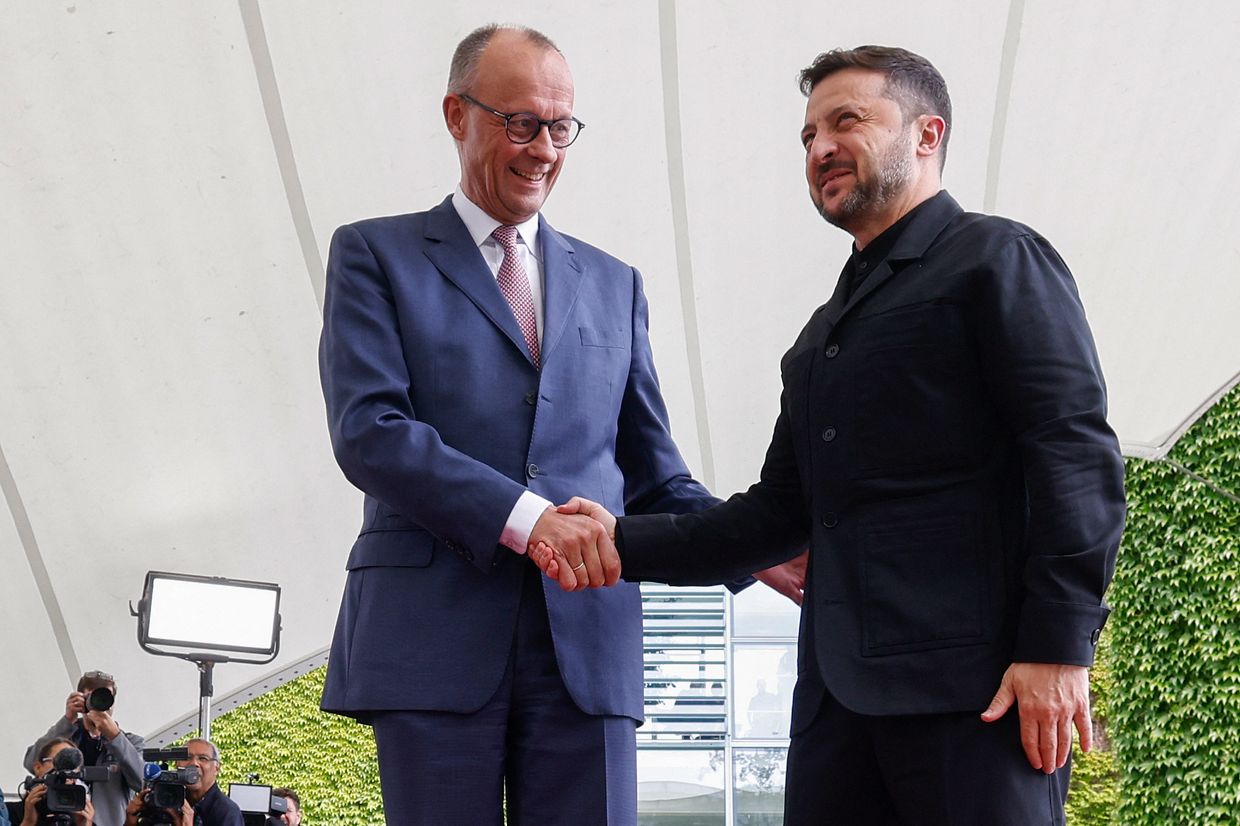
German Chancellor Friedrich Merz (L) shakes hands with Ukrainian President Volodymyr Zelensky as he arrives at the Chancellery in Berlin (Odd Anderson/ AFP via Getty Images)
The Taurus is a powerful cruise missile capable of striking targets at a distance of 500 kilometers, more than the long-range capabilities Ukraine received from other partners. Merz emphasized that using the missiles would require a lengthy training period, potentially taking “several months of training for soldiers in Ukraine.”
Before becoming chancellor, Merz had signaled he would overturn the ban of his predecessor, Social Democrat Olaf Scholz, on delivering Taurus to Ukraine. The primary distinction for Taurus compared to similar systems is in the design of the warhead — Taurus can be programmed to explode after hitting a specific target, such as a bunker.
NATO’s Growing Demands: 40,000 More German Troops Requested
NATO wants Germany to contribute seven more brigades, or roughly 40,000 troops, to boost collective defense against Russia, according to reports citing defense sources. The alliance’s overall demand for the number of brigades provided by member states could go from 80 to between 120 and 130.
Germany agreed to provide 10 brigades to NATO by 2030. It currently fields nine brigades — each comprising around 5,000 soldiers — including one new formation stationed in Lithuania. Though no firm date for implementing the changes has been set, 2030 has been mentioned as a preferred deadline.
The matter gained urgency after signals that the U.S., the most powerful military in NATO, plans to scale down its presence in Europe as President Donald Trump shifts strategic focus to the Asia-Pacific region.
Turkey’s Diplomatic Dance: Fidan Shuttles Between Moscow and Kyiv
Turkish Foreign Minister Hakan Fidan, whose country hosted the May 16 negotiations, said Ankara expects Ukrainian and Russian positions to come closer. Before his visit to Kyiv, Fidan met with Medinsky and Russian Foreign Minister Sergey Lavrov, sharing Turkey’s vision of realistic conditions that could help make a ceasefire attainable.
“We conveyed Turkey’s determined efforts in this matter to Putin, the chief negotiator, Foreign Minister Lavrov, and the intelligence chief. As a key regional actor, Turkey has shared its perspective on the realistic parameters that could make a ceasefire achievable,” Fidan said.
He also noted that Russia’s current demands for a ceasefire are putting Moscow in “a relatively weaker position.” Fidan stated that Trump’s “firm desire to see an immediate ceasefire” encouraged Ukraine and Europe to align more flexibly with the U.S. stance, but Russia did not show the same flexibility.
Military Justice: Ukrainian Colonel Charged with Cover-Up
Ukraine’s State Bureau of Investigation completed its probe into Colonel Oleh Poberezhniuk, commander of the 211th Pontoon Bridge Brigade, accusing him of knowingly allowing torture and abuse of soldiers under his command to continue unchecked.
From February to July 2024, Poberezhniuk was aware of repeated instances of torture and cruel treatment carried out by Senior Lieutenant Vladyslav Pastukh, who allegedly beat, humiliated, and tortured fellow servicemen. Pastukh is the son of the brigade’s chief of staff and a close associate of Poberezhniuk.
Poberezhniuk has been charged with inaction of military authority under martial law, carrying a sentence of seven to 10 years in prison. The charges follow a December 2023 investigation that revealed a pattern of systemic abuse within the brigade, including beatings, extortion, and reports of a soldier being tied to a wooden cross.
Ukraine’s Financial Burden: 75% of Budget Goes to Defense
Ukraine spent $20.8 billion on defense against Russia’s full-scale invasion, or about 75% of its total state budget expenditures of $27.9 billion in the first quarter of 2025, according to the Kyiv School of Economics Institute analytic center.
Ukraine’s Ministry of Defense laid out $16.4 billion — 78.8% of the $20.8-billion invoice for the war in the first quarter. The state budget received 14.3% more taxes than expected in the first quarter, with the main reason being changes in tax policy adopted at the end of last year and rising inflation.
Ukraine secured foreign aid of $2.3 billion in grants, which made up 11.6% of total revenues. Major loan disbursements included €3.5 billion from the EU under the Ukraine Facility, CA$2.5 billion from Canada, and $2.4 billion from the EBRD.
Cultural Heritage Under Siege: Art Preservation Through Technology
The Ukrainian Fund of Digitized Art launched in February 2025 with a mission to digitize Ukrainian art and transform them into non-fungible tokens that could be sold at auction. The organization has digitized more than 3,000 works by 60 artists, spanning both contemporary and classic Ukrainian art.
Russian forces have damaged or destroyed more than 1,400 cultural heritage sites and over 2,200 cultural facilities since the start of the full-scale war. In what has been recognized as the largest museum theft since World War II, Russian occupiers stole over 33,000 artworks and historical artifacts from two Kherson art museums in the fall of 2022.
The UFDA team has digitized 46 paintings from the Nykonor Onatskyi Regional Art Museum in Sumy, including works by 19th-century realist Mykola Pymonenko. During a Russian missile strike on April 13 that devastated central Sumy, killing at least 35 and injuring 117, the museum was damaged.
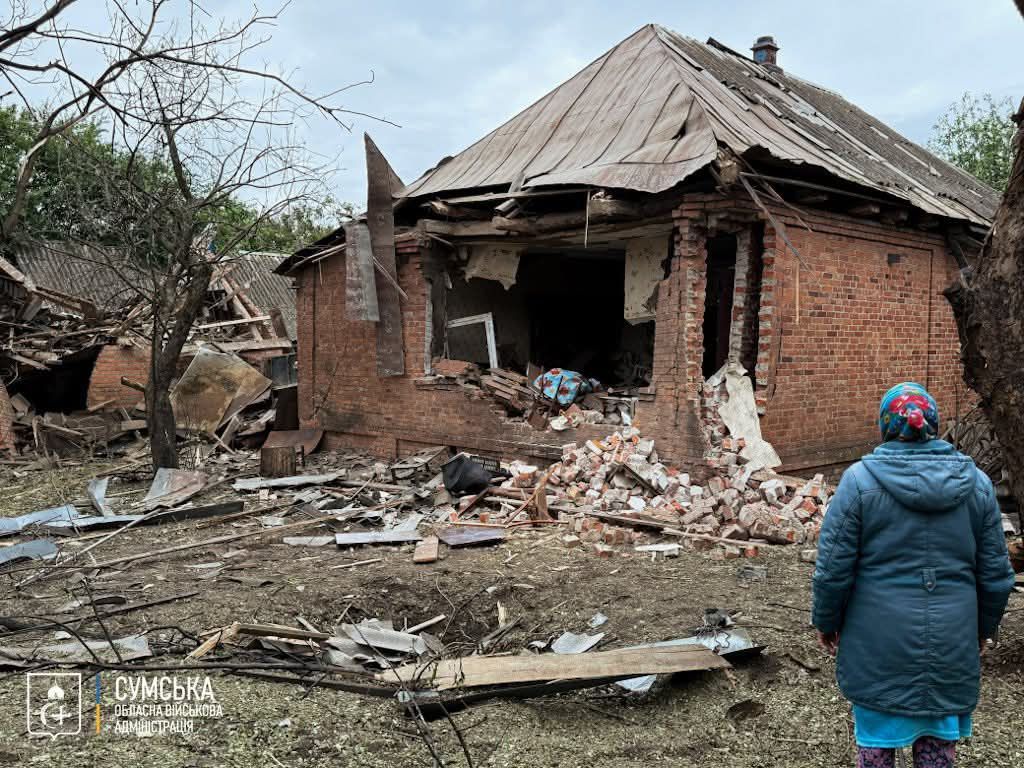
The aftermath of a Russian drone attack on Sumy Oblast, Ukraine, overnight. (Sumy Regional Military Administration)
Recognition for War Crimes Reporting: Kyiv Independent Wins Journalism Award
The Kyiv Independent’s investigative documentary “He Came Back,” which exposes sexual violence committed by Russian soldiers in Ukraine, won the 2025 Ukrainian journalism award “Honor of the Profession” in the Best Investigative Report category.
The film was authored by journalist Olesia Bida, a member of the Kyiv Independent’s War Crimes Investigations Unit. “Sexual violence in war is a war crime and a systemic strategy used by Russian forces. They face no consequences and continue committing these crimes in occupied territories,” Bida said.

The Kyiv Independent’s journalist Olesia Bida holds the Ukrainian journalistic award “Honor of the Profession” during a ceremony in Kyiv. Bida’s investigative documentary exposing sexual violence committed by Russian soldiers in Ukraine was recognized in the award’s Best Investigative Report category. (Olesia Bida/The Kyiv Independent)
After the investigation was published, one of the soldiers identified was formally charged by Ukrainian authorities, with his case already sent to court. A special nomination was posthumously given to late Victoriia Roshchyna, who died in Russian captivity after disappearing in August 2023 while reporting from occupied territories.
Diplomatic Pressure Mounts: Trump’s Two-Week Ultimatum
U.S. President Donald Trump hopes that the forthcoming peace negotiations between Ukraine and Russia will “move the ball forward” on his efforts to broker a peace deal, White House Press Secretary Karoline Leavitt said on May 29.
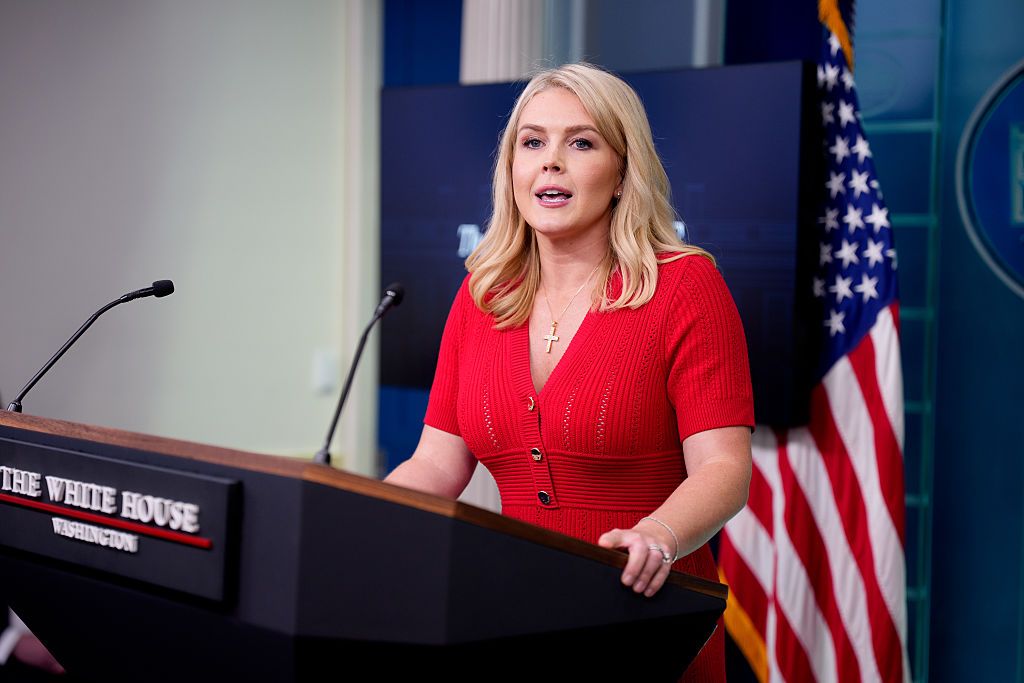
White House Press Secretary Karoline Leavitt speaks during the daily press briefing at the White House in Washington, DC. (Andrew Harnik/Getty Images)
“It is my understanding and it is our hope that Russia and Ukraine will engage in direct talks and negotiations next week in Istanbul,” she told reporters. “And we believe that meeting is going to take place, and that is a meeting the president encouraged and urged, for these two sides to come together and negotiate directly.”
Trump claimed on May 28 that it would “take about two weeks, or week and a half,” to know if Russian President Putin was stalling or truly interested in peace. He has repeatedly threatened sanctions after Russia launched three days of mass attacks against Ukraine but said he would not impose new sanctions on Russia due to the forthcoming peace talks.
Nuclear Plant in Limbo: No Signs of Zaporizhzhia Restart
Despite concerns over recent reports of new Russian infrastructure around the occupied Zaporizhzhia Nuclear Power Plant, an International Atomic Energy Agency official said on May 29 that there is currently no indication Russia is preparing to restart operations at the facility.
“Our teams continue to confirm there is no indication at the moment that there will be any active preparations for a restart of the plant now,” an IAEA official told Reuters, speaking on condition of anonymity. The comment follows Ukraine’s protest to the IAEA over what it called an illegal Russian attempt to connect the facility to its own energy grid.
Satellite imagery shows Russia has constructed more than 80 kilometers of high-voltage lines between the occupied cities of Mariupol and Berdiansk since February, potentially linking the Zaporizhzhia plant to a substation near Mariupol. The plant lost its main cooling source, the Kakhovka reservoir, when the dam was blown up by Russian forces in June 2023.
Moscow’s Direct Line to Washington: Lavrov Presents Peace Proposals
Russian Foreign Minister Sergey Lavrov presented to U.S. Secretary of State Marco Rubio Moscow’s “specific proposals” for the next round of peace talks with Ukraine, Russia’s Foreign Ministry announced on May 29. The two diplomats held a phone call on May 28, the same day Russia proposed holding negotiations with Ukraine in Istanbul on June 2.
Lavrov also “informed Marco Rubio about implementing the May 19 agreements between President of Russia Vladimir Putin and President of the United States Donald Trump,” according to the Russian readout. During the call, Rubio stressed Trump’s “intention to quickly bring the Ukraine conflict to an end and expressed Washington’s readiness to help the sides to bring their positions closer together.”
Putin’s conditions for ending Russia’s war against Ukraine reportedly include a written pledge by NATO not to accept more Eastern European members, lifting of some sanctions, and Ukraine’s neutral status, among other demands.
Crimean Disappearance: Ukrainian Citizen Vanishes After FSB Detention
A Ukrainian citizen disappeared in Russian-occupied Crimea earlier in May after being detained by people who presented themselves as Federal Security Service officers, Ukraine’s Ombudsman Dmytro Lubinets said on May 29.
Serhii Hrishchenkov was taken in Sevastopol overnight on May 7, and his whereabouts are currently unknown. Lubinets, who received an appeal from the man’s daughter, stressed that Hrishchenkov’s disappearance is “not an isolated case,” with other people being kidnapped by alleged FSB officers.
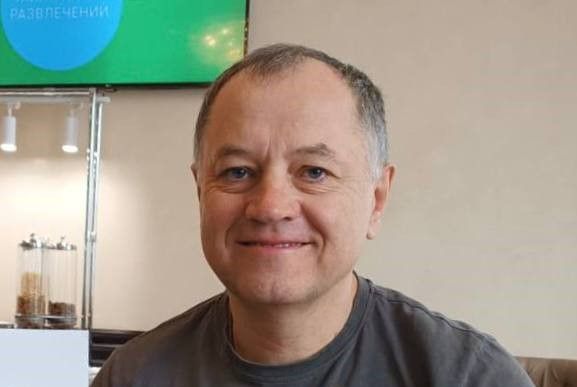
Serhii Hrishchenkov in a photo published by Ukraine’s Ombudsman Dmytro Lubinets on. (Dmytro Lubinets/Telegram)
“This case of a Ukrainian citizen once again demonstrates the inability of the occupation authorities to ensure the implementation of international civil and political rights for residents of occupied Crimea,” Lubinets said, adding that “cynicism and human rights violations have become commonplace for thousands of Ukrainian citizens.”
Madrid Mystery: Controversial Ex-Official’s Final Ukrainian Meetings
Former Ukrainian top official Andriy Portnov met in Ukraine with Oleh Tatarov, deputy head of the Presidential Office, and Oleksii Sukhachov, director of the State Bureau of Investigation, days before he was killed in Madrid, Ukrainska Pravda reported on May 29.
Portnov was shot dead by unidentified attackers outside the American School in Madrid on May 21. Four sources confirmed that Portnov was in Ukraine between May 17 and 18 and held meetings with senior officials overseeing Ukraine’s law enforcement agencies.
Portnov served in the administration of pro-Kremlin President Viktor Yanukovych between 2010 and 2014 and was sanctioned by the U.S. in 2021 over allegations of corruption. According to sources, Portnov had recently been seeking ways to have U.S. sanctions against him lifted and reportedly gathered information on USAID activities and civil society activists in Ukraine.
Sports Boycott: Ukraine Withdraws from World Judo Championships
Ukraine will not take part in the World Judo Championships set for June in Budapest due to Belarus’s participation in the competition, the Ukrainian Judo Federation announced on May 29. The decision came after the International Judo Federation confirmed that Belarusian athletes are allowed to participate in all international competitions under national symbols from June 1, 2025.
Since the outbreak of Moscow’s full-scale war, Ukraine has repeatedly called for a ban on Russian and Belarusian athletes from participating in international competitions. The Ukrainian Judo Federation condemned the decision, saying it contradicts “the fundamental principles of fairness, responsibility, and solidarity in the global sports movement.”
As of March, 591 Ukrainian athletes and coaches have been killed by Russia in the war, with 22 held captive and 11 missing, Ukraine’s Foreign Ministry said.
Cyber Warfare Escalates: Russian Hackers Target UK Defense Staff
Russian-linked hackers targeted U.K. Defense Ministry staff in an espionage operation while posing as journalists, Sky News reported on May 29. The cyber attack was detected and thwarted, the British government said.
Speaking to reporters, U.K. Defense Minister John Healey revealed the formation of a new cyber command tasked with managing both offensive and defensive cyber efforts. “The nature of warfare is changing,” Healey said. “The keyboard is now a weapon of war and we are responding to that.”
Western officials have warned about surging cases of Russian-linked cyberattacks and other hybrid operations, primarily targeting countries backing Ukraine against Russian aggression.
Ramstein Returns: Next Defense Meeting Set for Brussels
The upcoming Ukraine Defense Contact Group meeting in the Ramstein format will be held on June 4 in Brussels under the chairmanship of the U.K. and Germany, NATO announced on May 29. The summit will take place as Washington is trying to broker a peace deal between Ukraine and Russia.
Leadership over Ramstein transitioned following the inauguration of U.S. President Donald Trump. During the previous meeting in April, NATO allies committed more than 21 billion euros in long-term military aid to Ukraine amid growing uncertainty over U.S. support.
Vengeance Guard Delivers: New Sniper Rifle for Ukrainian Forces
Volunteers from the “Vengeance Guard” project, Yury Chornomorets and Dmytro Batyshchev, handed over a long-range “Chernivtsi-Ashdod” sniper rifle to paratroopers of Ukraine’s Airborne Assault Forces on May 28 in Kyiv.
The rifle — a .338 caliber Ruger — was handed over for use by the 8th Separate Rifle Battalion. “This time, the rifle and scope were purchased by Mr. Ihor from Israel,” said Batyshchev. “This is the first rifle in the project with a dual name. Chernivtsi is a special city for him, and naming the rifle after both Chernivtsi and Ashdod reflects a unique connection with Ukraine.”
Since its launch in May 2023, the Vengeance Guard project has seen participation from 27 Ukrainian cities and one village, delivering over 400 sniper systems to Ukrainian forces.
A War Without End: The Grinding Reality of May 29
As diplomatic initiatives multiplied and promises proliferated, the fundamental reality of the war remained unchanged. Russian forces continued their methodical advance across multiple fronts while Ukrainian defenders fought to hold each village and hill. The contradiction between Moscow’s peace rhetoric and its battlefield behavior became increasingly stark, with every promise of dialogue accompanied by new attacks on Ukrainian cities.
The revelation of China’s drone embargo against Ukraine while maintaining supplies to Russia highlighted how the conflict’s technological dimensions continue to evolve in Russia’s favor. Meanwhile, Ukraine’s deployment of AI-powered drones demonstrated its determination to innovate its way out of disadvantage, even as traditional diplomatic channels remained clogged with unfulfilled promises and strategic delays.
With June 2 looming as the proposed date for the next Istanbul meeting, the question remained whether Russia would finally produce its long-promised memorandum or continue the pattern of diplomatic theater that has characterized its approach to peace negotiations throughout the war.

You have a way of articulating what many of us feel but don’t quite know how to say. That’s a rare and precious skill.